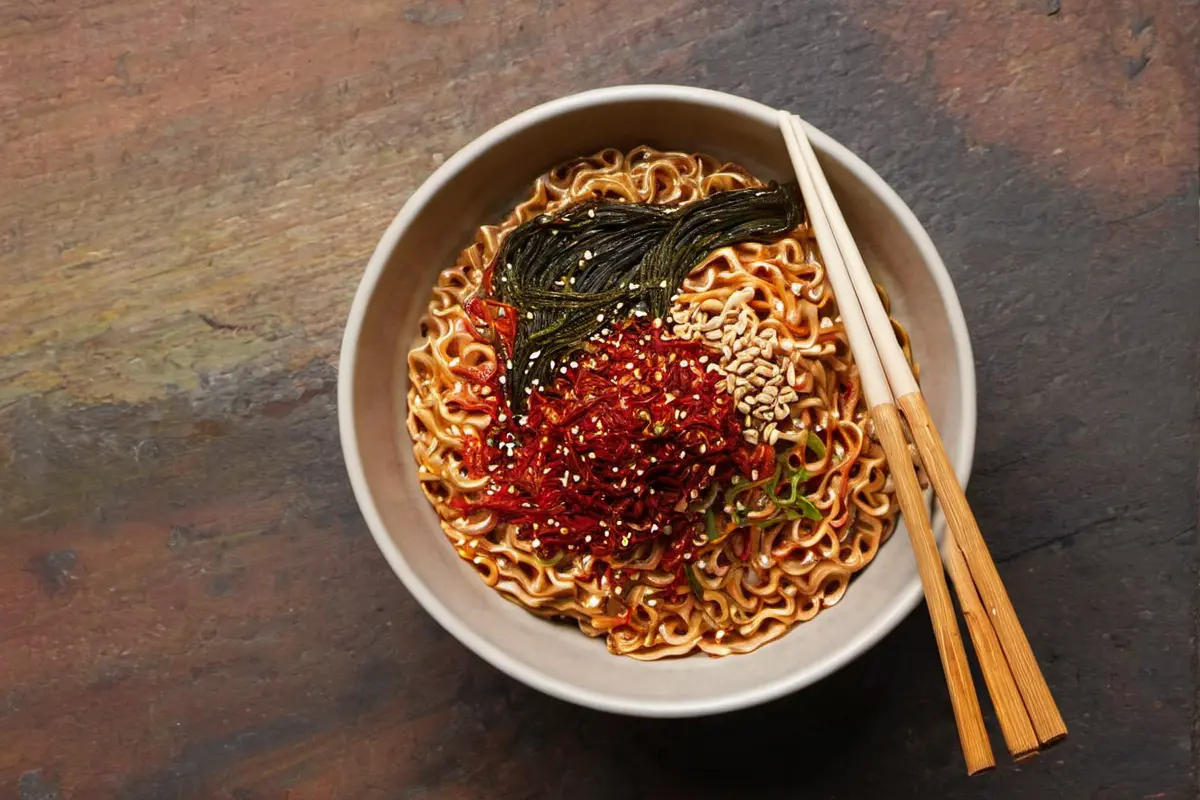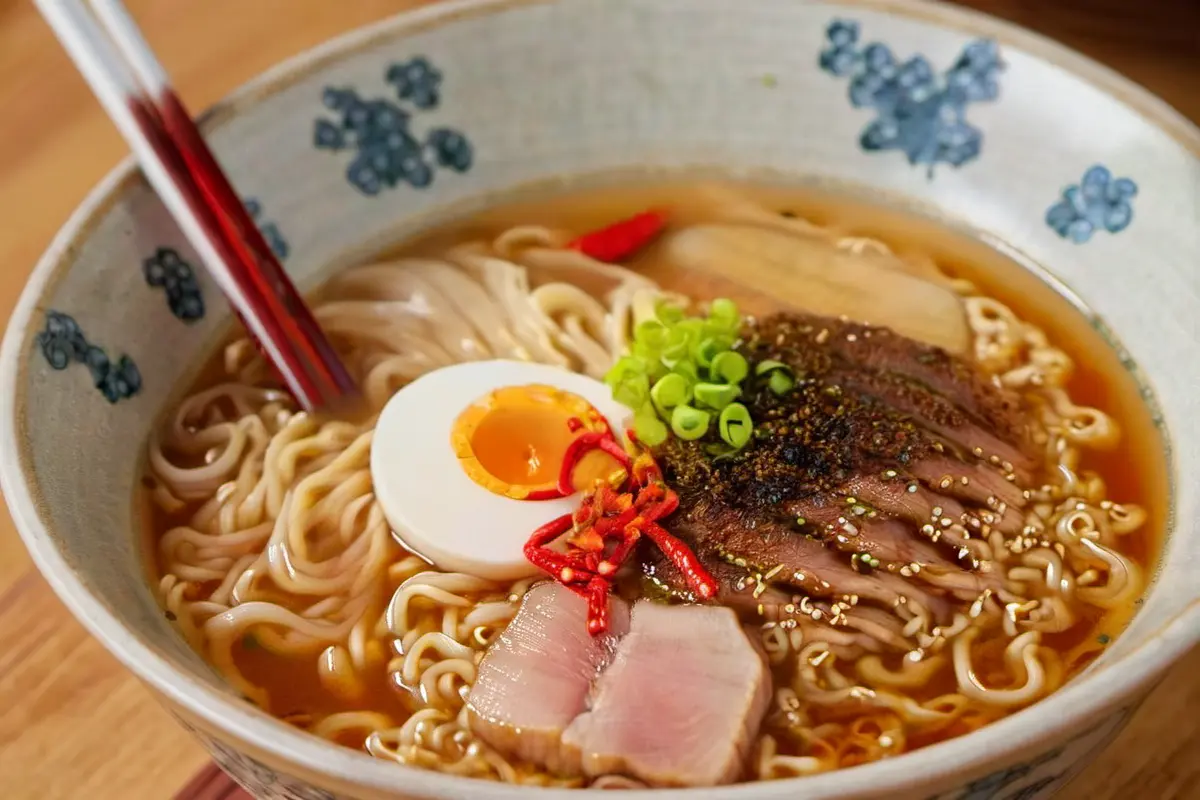Analyzing the Spiciness of Togarashi
What Makes Togarashi Spicy?
The heat in Togarashi primarily comes from its chili peppers, but what truly sets it apart is how the other components amplify this spiciness. The sansho pepper, a key ingredient, not only adds its own tingling heat but also enhances the overall pungency of the blend. This interaction between ingredients creates a multi-dimensional spiciness that is more complex than simply the heat of chili peppers alone.
Additionally, the inclusion of dried citrus peel introduces a sharp, tangy flavor that contrasts with the heat, making the spiciness more pronounced. This balance between tangy and spicy notes is what makes Togarashi uniquely vibrant and intense in flavor.
Comparison of Togarashi to Other Spices
Comparatively, Togarashi offers a different kind of heat than other common spices. For instance, while cayenne pepper is known for a direct, fiery heat, Togarashi provides a layered spiciness due to its blend of multiple ingredients. Each component works synergistically to deliver a heat that ebbs and flows, offering a sensory experience that is both surprising and delightful.
Moreover, when you compare Togarashi to a spice like black pepper, which delivers a sharp bite, Togarashi’s heat is more enveloping and less immediate. This makes it ideal for dishes that benefit from a gradual build-up of flavor.
The Scoville Scale and Togarashi
On the Scoville scale, which measures the pungency of chili peppers and other spicy foods, Togarashi does not have a fixed position because it is a blend. However, the heat level can be approximated based on the types of chili peppers used in the mix. Typically, Togarashi can range from mild to very hot, making it a versatile choice for adjusting the spice level in various dishes.
This variability is especially useful in cooking, as it allows chefs to tailor the spiciness to different palates and recipes. Whether you’re looking to add a slight tickle of heat or a bold burst of flavor, Togarashi provides the flexibility to enhance your dishes in exactly the way you desire.
In this section, we explored the sources of Togarashi‘s spiciness and how it compares to other spices. Next, we will look at the different varieties of Togarashi and how their spiciness varies by region in Japan. Join us as we continue to delve into the spicy world of Togarashi!
Togarashi Varieties and Their Spiciness
Different Types of Togarashi
Togarashi comes in various blends, each with its unique set of ingredients that influence its overall flavor and heat. Below is a table comparing three popular types: Shichimi Togarashi, Yuzu Shichimi, and a regional variety that includes wasabi. Each type is tailored to reflect local tastes and culinary traditions, offering a glimpse into the diverse world of Japanese spices.
| Type |
Main Ingredients |
Flavor Notes |
Best Used In |
| Shichimi Togarashi |
Chili peppers, sansho, seaweed, sesame seeds, poppy seeds, citrus peel, ginger |
Balanced, with a slight citrusy heat |
Noodles, soups, grilled meats |
| Yuzu Shichimi |
Chili peppers, yuzu peel, sansho pepper, sesame seeds |
Fresh and citrusy, with mild heat |
Fish dishes, sauces, and dressings |
| Regional (Wasabi) |
Wasabi, chili peppers, sesame seeds, dried seaweed |
Sharp and potent with a distinct kick |
Sushi, seafood, and snacks |
This table not only makes it easier to understand the differences and similarities between each type of Togarashi but also helps highlight their culinary versatility. Whether you’re looking to add a subtle zest or a bold flavor burst, there’s a Togarashi blend to meet every need. For a deeper dive into the different flavors and uses of Togarashi, consider exploring our detailed guide on Togarashi Seasoning.
Additionally, some regional blends might incorporate local spices or elements, such as wasabi or dried shiso leaves, further diversifying the flavors and spiciness of Togarashi. These regional varieties offer a glimpse into local culinary preferences and how they adapt the classic Togarashi to suit local tastes.

Regional Variations in Togarashi Spiciness
The spiciness of Togarashi can vary significantly from one region to another. In areas like Kyushu, the blend might be hotter due to the inclusion of more chili peppers, reflecting the locals’ preference for more robust flavors. Conversely, in regions such as Kanto, Togarashi might be milder, catering to a palate that favors subtler tastes. For an insight into the historical evolution of Shichimi Togarashi and its significance in Japanese culture, consider exploring Shichimi Togarashi: The Seven-Flavor Spice Blend from Japan.
This regional diversity not only makes Togarashi a versatile ingredient in Japanese cuisine but also allows it to be a culinary bridge for people around the world to explore the different flavors of Japan. Whether it’s the sharp zest from Tokyo or the smoky depths from Osaka, each variety brings its own story and character to dishes.
We will continue to explore the intricate world of Togarashi in our next section, delving into the practical and delicious ways chefs use this spice blend in both traditional and innovative dishes. Join us as we discover how Togarashi enhances culinary creations with its unique blend of heat and flavor.
Culinary Uses of Togarashi
Popular Dishes Featuring Togarashi
Togarashi is a versatile spice that enhances a myriad of dishes with its unique flavor profile. It’s commonly sprinkled over ramen to add a spicy kick that complements the rich broth. Another classic application is on udon noodles, where Togarashi provides a contrasting spicy element to the dish’s mild flavors. Additionally, to see how Togarashi can be transformed into a flavorful sauce that complements various dishes, check out our article on Togarashi Sauce.
In addition to noodles, Togarashi is often used as a seasoning for grilled meats and seafood. Its heat and tanginess enhance the natural flavors of the proteins, making it a favorite among barbecue enthusiasts. It can also be found dusting over rice dishes and even incorporated into sauces and dressings to bring depth and complexity.
DIY Togarashi Recipes
For those who love to experiment in the kitchen, making your own Togarashi blend allows for customization to suit personal taste preferences. Start with the base ingredients of chili peppers, sesame seeds, and seaweed. From there, add citrus peel for brightness, and consider incorporating other spices like ginger or garlic for additional layers of flavor.
Creating your own blend not only lets you control the spiciness but also ensures you have a fresh, preservative-free seasoning at your fingertips. Use it to spice up everyday dishes or as a secret ingredient in your party snacks, giving a unique twist that will surely impress your guests.
As we continue to explore the diverse applications of Togarashi, we will also look into the health implications of integrating this spicy seasoning into your diet. Stay tuned to learn more about the benefits and potential considerations when consuming Togarashi.
Health Benefits and Risks of Togarashi
Health Benefits of Spicy Foods
People celebrate spicy foods, including Togarashi, not only for their ability to enhance flavors but also for their potential health benefits. Capsaicin, the compound found in chili peppers that gives Togarashi its heat, has been studied for its effects on metabolism. It is believed to aid in weight loss by increasing metabolic rate and reducing appetite.
Additionally, the antioxidants in Togarashi—such as those found in its sesame seeds and citrus peels—contribute to overall health by fighting free radicals in the body. This can help prevent chronic diseases and support immune health. The spice’s diverse ingredients also offer a range of vitamins and minerals that bolster well-being.
Potential Risks and Side Effects
While the benefits of Togarashi are significant, it’s important to consider potential risks, especially for those with certain health conditions. The capsaicin in Togarashi can irritate the digestive system, so those with gastrointestinal issues such as acid reflux or ulcers should use it cautiously.
Furthermore, the spiciness of Togarashi can also trigger allergic reactions or sensitivities in some individuals. Symptoms may include itching, swelling, or respiratory difficulties. It’s advisable for people with known spice sensitivities to approach Togarashi with caution or consult a healthcare provider before incorporating it into their diet.
As we conclude this section on health impacts, it’s clear that Togarashi offers both intriguing benefits and important cautions. Moving forward, we’ll summarize the key points discussed and reflect on the place of Togarashi in culinary arts and health. Stay tuned for our conclusion, which ties together all the spicy details we’ve explored!
Conclusion
As we wrap up our exploration of Togarashi, it’s evident that this Japanese spice blend offers much more than just heat. Its complex combination of flavors—ranging from the sharp zest of citrus peel to the earthy undertones of sesame seeds—makes Togarashi a versatile and dynamic addition to many dishes. From enhancing a simple bowl of noodles to transforming a piece of grilled meat, Togarashi infuses meals with a distinctive, spicy kick that is both enjoyable and memorable.
Moreover, the health benefits associated with the spices in Togarashi, such as improved metabolism and antioxidant protection, provide added value beyond its culinary uses. However, it’s also crucial to acknowledge the potential risks for those with certain health conditions or sensitivities. As with any spice, moderation and awareness of one’s own dietary needs are key.
In summary, whether you’re a seasoned chef or a curious foodie, integrating Togarashi into your cooking repertoire can open up a world of flavor possibilities. Its rich history and broad application across various dishes make it a staple in not only Japanese cuisine but also in global gastronomy. So, next time you’re looking to spice up your meal, consider reaching for some Togarashi—and enjoy the vibrant flavors it brings to your table.
FAQs (Frequently Asked Questions)
-
What is Togarashi made of?
- Togarashi is a blend of seven ingredients including chili peppers, sansho pepper, dried citrus peel, sesame seeds, poppy seeds, seaweed, and ginger.
-
How spicy is Togarashi compared to chili peppers?
- The spiciness of Togarashi can vary, but it generally offers a more complex and layered heat compared to the direct spiciness of chili peppers due to its blend of multiple ingredients.
-
Can Togarashi be used in non-Japanese dishes?
- Absolutely, Togarashi is versatile and can enhance a variety of dishes, including Western and other Asian cuisines, by adding a unique spicy flavor.
-
Is Togarashi suitable for all diets?
- Togarashi is generally suitable for most diets, but individuals with specific dietary restrictions or allergies (particularly to sesame or seaweed) should check the blend’s ingredients carefully.


